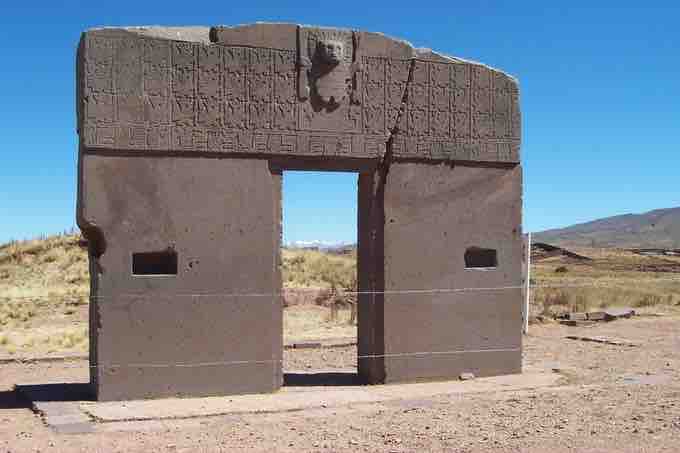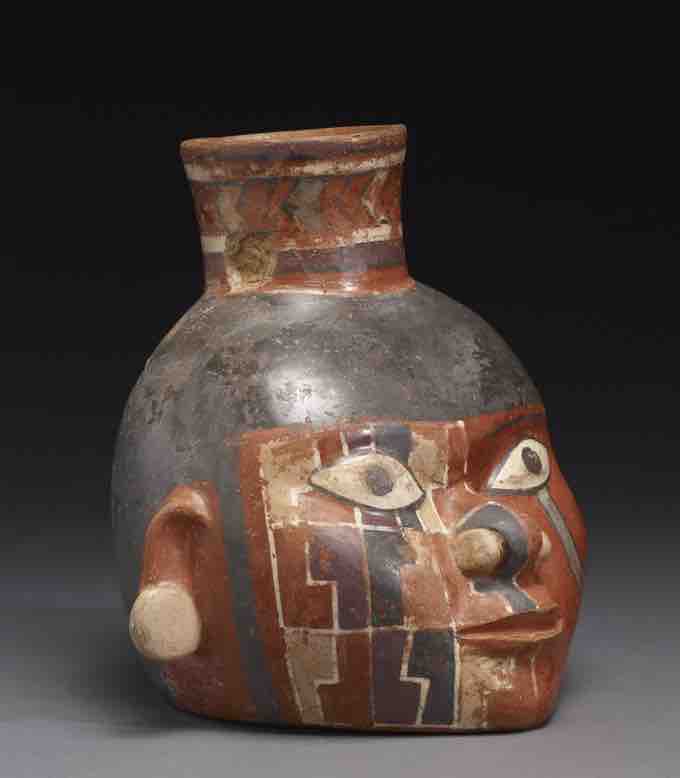Tiwanaku is an important Pre-Columbian archaeological site in western Bolivia, South America. Tiwanaku is recognized by Andean scholars as one of the most important precursors to the Inca Empire, flourishing as the ritual and administrative capital of a major state power for approximately five hundred years .

The "Gate of the Sun"
This site was the spiritual and political center of the Tiwanaku culture.
The city and its inhabitants left no written history, and the modern local people know little about the ancient city and its activities. An archaeologically based theory asserts that around 400 CE, Tiwanaku went from being a locally dominant force to a predatory state. Tiwanaku expanded its reaches into the Yungas and brought its culture and way of life to many other cultures in Peru, Bolivia, and Chile. However, Tiwanaku was not exclusively a violent culture.To expand its reach, Tiwanaku used politics to create colonies, negotiate trade agreements (which made the other cultures rather dependent), and establish state cults. Many others were drawn into the Tiwanaku empire due to religious beliefs .

Walls around the temple Kalasasaya at Tiwanaku
The Kalasasaya temple at Tiwanaku was used as a ceremonial center.
Architecture
Tiwanaku monumental architecture is characterized by large stones of exceptional workmanship. The main architectural appeal of the site comes from the carved images and designs on carved doorways and giant stone monoliths. Tiwanaku's architecture and skill in stone-cutting reveals a knowledge of descriptive geometry.
The quarries, from which the stone blocks used in the construction of structures at Tiwanaku came, lie at significant distances from this site, which has led scholars to speculate on how they could have been moved. One theory is that giant andesite stones, weighing over 40 tons, were transported some 90 kilometers across Lake Titicaca on reed boats and then laboriously dragged another 10 kilometers to the city.
Tiwanaku sculpture is comprised typically of blocky column-like figures with huge, flat square eyes and detailed with shallow relief carving. They are often holding ritual objects. Some have been found holding severed heads, such as the figure on the Akapana which possibly a puma-shaman. These images suggest ritual human beheading, which correlate with the discovery of headless skeletons found under the Akapana.
Ceramics & Textiles
Ceramics and textiles, composed of bright colors and stepped patterns, were also present at Tiwanaku. An important ceramic artifact is the kero, a drinking cup, that was ritually smashed after ceremonies and placed in burials. Tapestries and tunics provide examples of textiles found at Tiwanaku.
These decorative objects typically depicted herders, effigies, trophy heads, sacrificial victims, and felines. The key to spreading religion and influence from the main site to the satellite centers was through small portable objects that held ritual religious meaning. They were created in wood, engraved bone, and cloth and depicted puma and jaguar effigies, incense burners, carved wooden hallucinogenic snuff tablets, and human portrait vessels.
The Wari
Throughout their imperial reign, the Tiwanaku shared domination of the Middle Horizon with the Wari. Their culture rose and fell around the same time and was centered 500 miles north in the southern highlands of Peru. The relationship between the two empires is unknown, either being cooperative or antagonistic. Definite interaction between the two is proved by their shared iconography in art. Significant elements of both of these styles (the split eye, trophy heads, and staff-bearing profile figures, for example) seem to have been derived from that of the earlier Pukara culture in the northern Titicaca Basin .

Wari earthenware pot with painted design, 650-800 CE (Middle Horizon).
The Wari shared much in common aesthetically with the Tiwanaku.
The Tiwanaku created a powerful ideology, using previous Andean icons that spread throughout their sphere of influence using extensive trade routes and shamanistic art. Tiwanaku art consisted of legible, outlined figures depicted in curvilinear style with a naturalistic manner, while Wari art used the same symbols in a more abstract, rectilinear style with a militaristic manner.